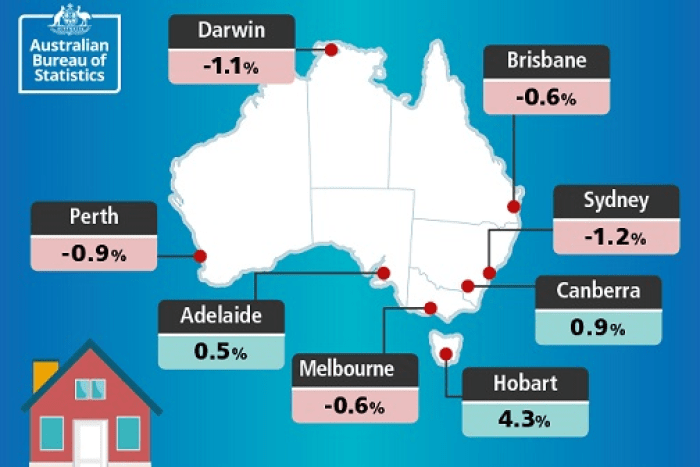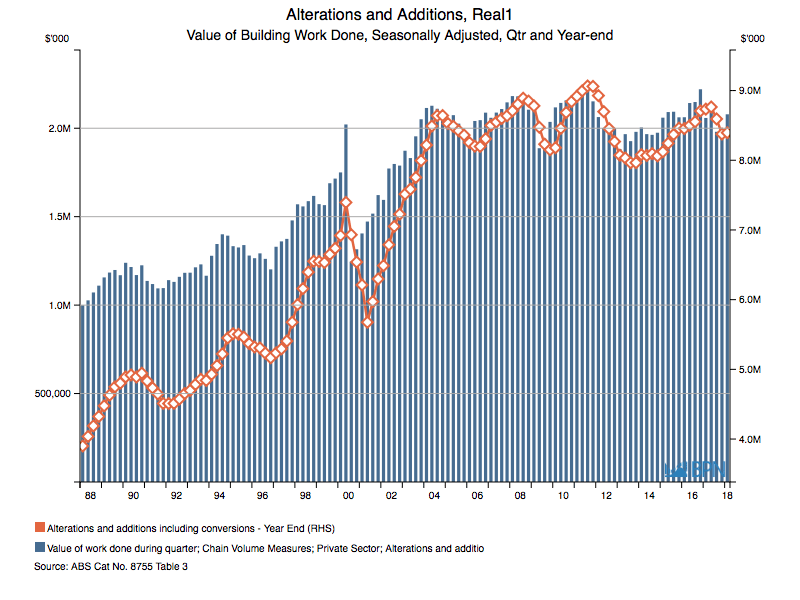Australia’s exports of wood fibre continue to boom, with little sign of abatement any time soon. Both the two main export products – Hardwood chips and Softwood logs – experienced new export records in the year-ended November 2017, while Builder’s Joinery exports also rose sharply over the last year. The boom in raw wood exports continues to be of more than passing interest, because wood that is exported cannot be manufactured into wood products in Australia.
In total, Australia’s exports of wood and wood products rose a small 1.2% for the year to the end of November 2017, compared with the prior year. This is a somewhat hybrid figure because it includes some different units of measurement for a few products (woodchips are exported in bone dry metric tonnes [bdmt] for instance). Additionally, some products have data obscured from measurement and reporting for ‘confidentiality’ reasons, which can impact the total numbers.
But the plainest point of all here is that those considerations and qualifications aside, Australia’s wood and wood products exports hit a fourth successive year-end record in the most recent period, as the chart below shows.

To go straight to the dashboard and take a closer look at the data, click here
It is plain to see that the major product remains Woodchips (4401.00), so it is useful to drill further into that data. Following the volume based data in the first chart, we can observe in the second chart what we expect to see with these exports – hardwood chip exports dominate, across all time periods.

To go straight to the dashboard and take a closer look at the data, click here
Shown in orange above, hardwood chip exports totaled 6.478 million bdmt for the year-ended November 2017. If we think of moisture at a simple 50%, that is as near as anything to 13 million green metric tonnes of wood! Shown in the aqua blue, the second large volume of woodchip exports is softwood chips. Exports totaled 0.658 million bdmt.
Of interest, is that in 2017, there are small but noticeable (barely!) volumes of exports of Hardwood Fuelwood (4401.12.00) and of Wood Pellets (4401.31.00). Watch that space!
Turning to log exports, the situation is reversed. Softwood log exports absolutely dominate, with hardwood logs running a very modest second. That would make for a very boring chart (much like the one above), but as can be seen below, there are some recent developments that make the picture somewhat more interesting.

To go straight to the dashboard and take a closer look at the data, click here
Since the start of 2017, the world’s trade reporting system has recorded log trade on a more refined basis. Softwood logs are broken down based on whether they are ‘Pine’ or ‘Other’ and also whether they are less than or greater than 15 centimetres at the Small End Diameter (SED). For a little added confusion, Hardwood logs are broken down to Eucalyptus, Sandalwood and Other (at least for Australian purposes).
The list below details the codes shows in the charts above, to make them easier to read:
Softwood
4403.11.00 – Treated Softwood Logs
4403.21.00 – Softwood (Pine) >15 cm SED
4403.22.00 – Softwood (Pine) <15 cm SED
4403.25.00 – Softwood (Other) >15 cm SED
4403.26.00 – Softwood (Other) <15 cm SED
Tropical
4403.49.02 – Tropical (not Meranti)
Hardwood
4403.91.00 – Hardwood (Oak)
4403.98.00 – Hardwood (Eucalyptus)
4403.99.61 – Sandalwood
4403.99.99 – Hardwood – Other
So, with explanations done and introductions made, we can return to the main point, but noting that the greater granularity of data allows for a more refined understanding of log exports and dynamics than ever before.
For the year-ended November, Australia’s log exports totaled 4,610,948 m3, up 18.0% on the prior year and recording a fifth successive annual record. In total, Softwood logs (regardless of species or size) totaled 4,014,901 m3, up 12.4% on the prior year.
That is astounding, and depending on your perspective and market position, a great thing or a concern about future resource access, but it is not the only story in log exports.
Albeit off a lower base, over the same period, hardwood log exports grew 75.0% to total 581,616 m3 for the year. That is a large lift and as many in the industry know, includes exports that are both carried bulk and increasingly in containers.
There is a demonstrable global appetite for wood fibre that Australia is feeding into. Whether in the medium to longer term that contributes to a domestic supply constraint is fast becoming the real question of interest.



